
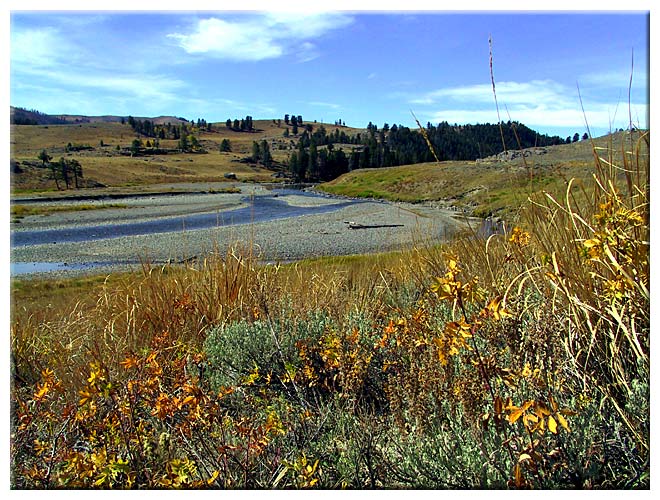
The Lamar Valley is really a small portion of the total length
of the Lamar River
in Yellowstone Park, since so much of the river runs through rugged
canyons. The
valley portion is really what you see from the top of the lower
canyon to a little
beyond the Lamar's junction with Soda Butte Creek, probably a
distance of about
four miles. All of that distance is a mile wide meadow laced with
gravel bars and
studded with cottonwoods. In the Fall it all turns golden and
captures the stark light
of an ever lowering sun.
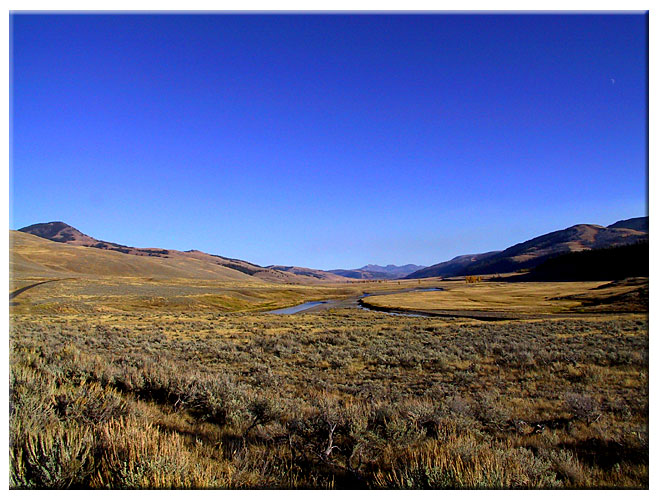
The valley has always given me a feeling of bigness. The width
and length and great
expanse of deep cobalt sky make one contemplate eternity. The
golden crispness of
Autumn brings warmth to the dying days of Summer and the frigidness
of looming Winter.

The upper end of the Valley runs past the junction of the Lamar
River with Soda
Butte Creek. Deep in the distance are the high peaks of the Absarokas,
the source
of the crystal waters of the Lamar and its tributaries.
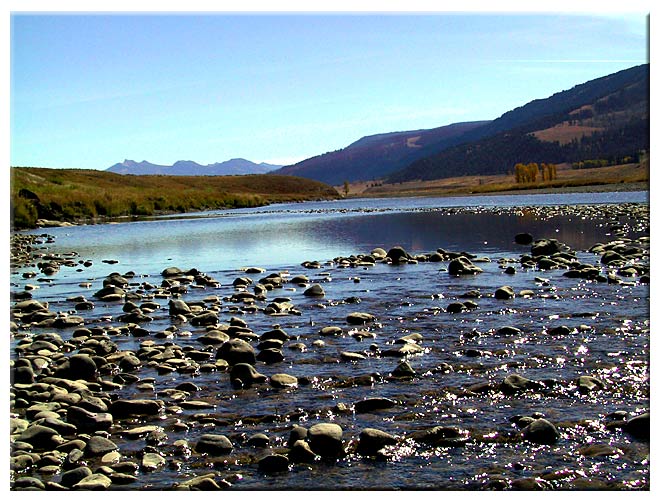
The drought of the last two years has gradually sucked the waters
of the river
nearly dry. Usually a deep and swift torrent, it is now reduced
to shallow gravel
bars in many places.

Shallow oxbows stand nearly dry against a backdrop of shallow
riffle runs
between wide gravel bars against the far bank.
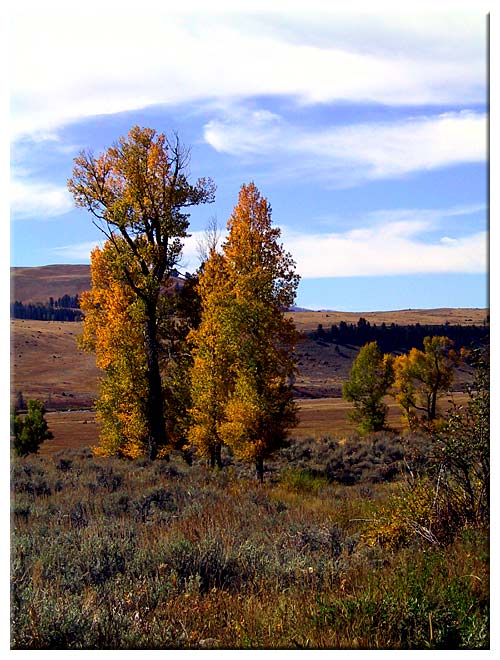
It is a long expanse from the north side of the valley to the
buttes
running the length of the river on the south side. The valley
at its
widest point is surely more than a mile.

Spring seeps meander along the edges of the valley in many places,
eventually
flowing into the river to help replenish what the blistering sun
of summer has
taken away.
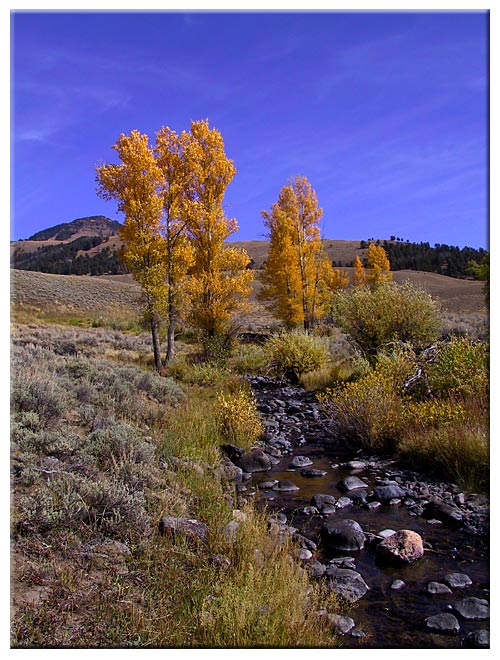
Some of the springs have their beginnings in the hills along the
sides of the valley.This one runs full flow from a spring, well
above the Buffalo Ranch.
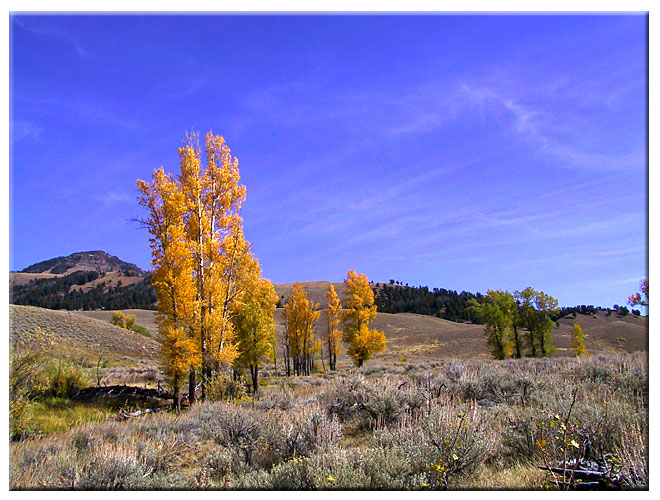
It is easy to follow the meandering spring flows by scanning the
hills for cottonwoods.
They only grow in areas of fairly consistent moisture.
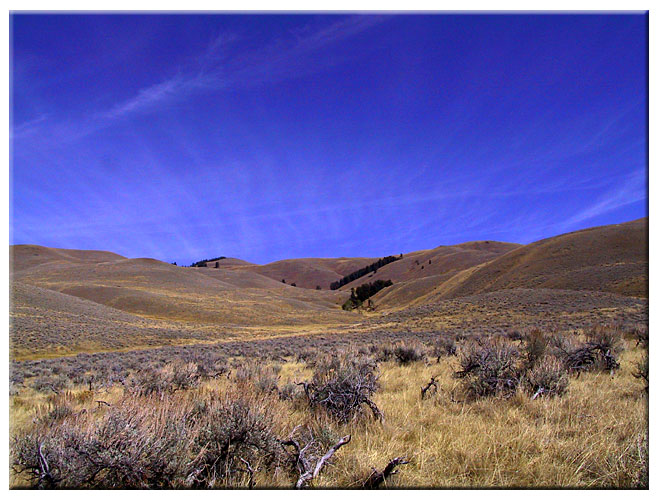
The rolling hills to the north are mostly barren of trees and
are studded with
sage brush and buffalo grasses. Wolves and grizzlies roam them
and tantalize
the animal gazers along the Northeast Entrance Road.
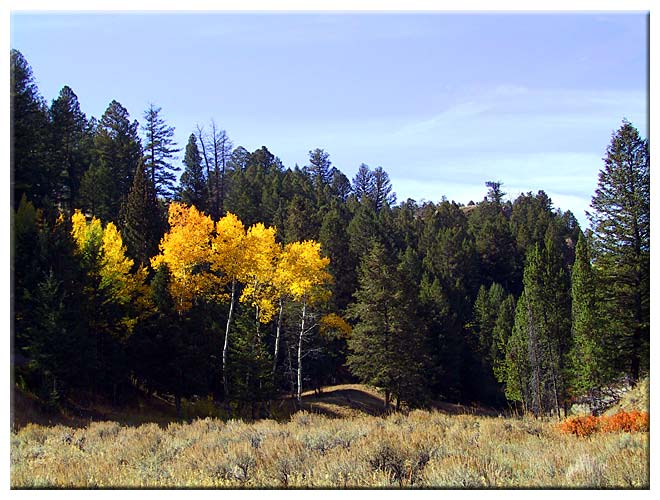
The distant hills to the South provide the right environment for
Douglas firs and aspens.
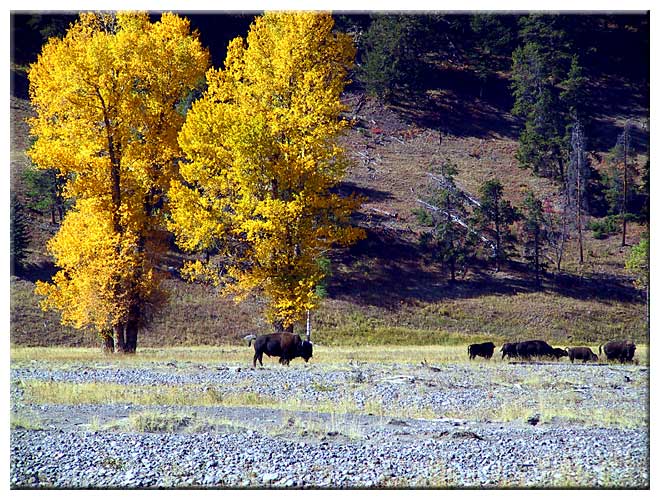
Bison are king of the river bottoms. They live the whole year
right here. Rich grasses
provide them all they need throughout all the seasons.
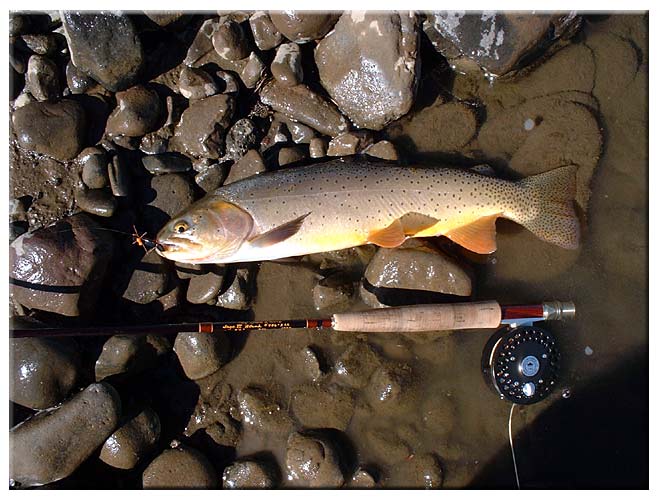
The Lamar River is the home of the black spotted cutthroat trout,
also known as the
Yellowstone cutthroat. His vanilla orange colors blend with the
golden hues of Fall.
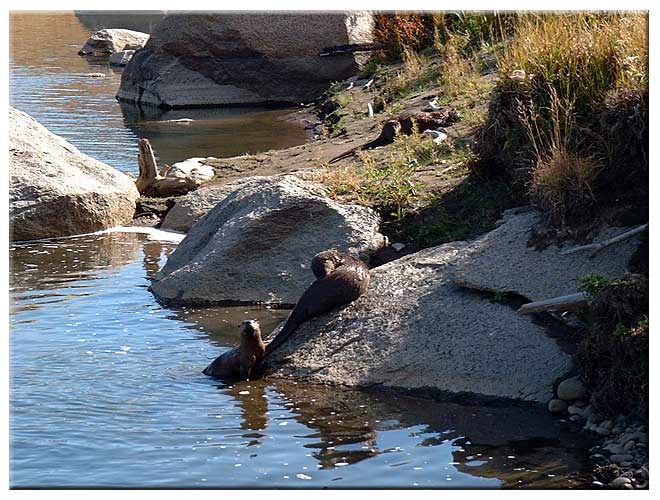
A family of otters was living in the long hole by the big rock
when I visited the
Lamar recently. The long deep hole has lots of small cutthroat
trout for them
to feed on.

Autumn brings short days and vivid sunsets to the Lamar Valley.
The low hills
to the West help the sun to linger long into darkness.
The memories of the golden warmth of Autumn in
the Lamar Valley will carry me through the winter.
















